Certified Translation: The Ultimate Checklist for Accuracy and Acceptance

Summary
When you need to submit documents for official use, a certified translation is often required to ensure accuracy and acceptance. Whether for USCIS certified translation, legal documents, or business contracts, certified translations guarantee that your documents are both accurate and legally valid. This guide outlines when and why certified translation services are essential and provides a checklist to help you ensure your translations meet all necessary standards for official use.
1. What Is a Certified Translation and Why Do You Need One?
A certified translation is more than just swapping words between languages. It is a formal, legally binding process where a translator affirms that the translation of a document is accurate and complete to the best of their ability. This certification typically comes with a statement from the translator, verifying that the translation is a true reflection of the original document, and it is often necessary for legal or official purposes.
What Makes a Translation “Certified”?
To be considered certified, a translation must include several key elements:
- Statement of Accuracy: This is a brief statement from the translator confirming that the translation is true and accurate to the best of their knowledge.
- Proof of Qualifications: The translator’s credentials must be provided, often showing membership in recognized bodies such as the American Translators Association (ATA) or the National Accreditation Authority for Translators and Interpreters (NAATI).
- Contact Information: The translator’s full name, address, phone number, and email address must be provided, so the document can be verified if necessary.
- Notarisation (If Needed): Some organizations, such as USCIS, require notarization of the certified translation, which provides an additional layer of authenticity.
Certified translations are critical in situations where accuracy is paramount, and the document needs to be legally recognized by government agencies, courts, or institutions.
Why Do You Need Certified Translation Services?
Certified translations are required in various scenarios, particularly when documents need to be legally recognized. These include:
- Immigration Applications: USCIS requires certified translations of foreign-language documents submitted for visa, green card, or citizenship applications.
- Legal Matters: Courts often require certified translations of contracts, court filings, and other legal documents.
- Official Records: Government agencies, universities, and businesses require certified translations of official documents like birth certificates, marriage certificates, and educational transcripts.
In these cases, using certified translation services ensures your documents are accurate, complete, and legally acceptable.
2. When Do You Really Need Certified Translation Services?
Certified translation services are needed in specific scenarios where legal recognition or official acceptance of the document is required. Let’s dive into the situations where certified translations are essential:
1. Immigration Documents and USCIS Filings
For any immigration paperwork, including visa applications, green card requests, and citizenship petitions, USCIS requires that all foreign-language documents be translated into English. These translations must be certified to be accepted by USCIS. This includes documents such as:
- Birth certificates
- Marriage and divorce certificates
- School transcripts
- Passport pages
If any document is not translated accurately or does not meet the USCIS translation requirements, the application may be delayed, rejected, or require resubmission.
USCIS Translation Requirements:
- Accuracy: The translation must be a true and accurate representation of the original document.
- Certification Statement: The translator must provide a signed statement attesting to the accuracy of the translation.
- Notarization (if applicable): In some cases, USCIS requires that the translator’s signature be notarized to verify the authenticity of the translation.
Failure to meet these requirements can lead to significant delays in the immigration process, so it’s essential to use certified translation services for any USCIS submission.
2. Legal Documents
Certified translations are also needed for legal documents, where even small errors in translation can lead to misunderstandings or legal complications. Common legal documents requiring certified translation include:
- Contracts and agreements: Sales agreements, licensing contracts, joint-venture deals.
- Court filings: Documents such as motions, judgments, and pleadings from foreign courts.
- Wills and estate documents: Wills, trusts, and probate documents that need to be understood in a different jurisdiction.
- Intellectual property filings: Patents, trademarks, and other intellectual property documents that are filed in multiple countries.
In these situations, a mistranslation can cause legal disputes, invalidate contracts, or cause delays in court cases. Certified translations are necessary to ensure that legal documents are interpreted accurately and accepted by courts.
3. Business Documents and Official Records
Certified translations are also essential in business and regulatory contexts. Companies that work internationally often need official translations of documents such as:
- Product manuals and user guides: Particularly for products that require compliance with regulations like FDA safety standards or ISO 13485 quality standards.
- Safety data sheets and environmental reports: Documents required by regulatory agencies like OSHA or REACH (in the EU).
- Marketing materials: Translated to meet labeling laws and to avoid false claims in foreign markets.
- Financial statements and tax returns: Translations required by tax authorities or auditors in different countries.
Accurate certified translations of these documents are necessary to ensure that companies meet international regulations, avoid fines, and protect their reputation in global markets.
3. How Accredited Translators Keep Quality High
Accredited translators are the backbone of certified translation services. These professionals are not only fluent in both the source and target languages, but they also possess specialized knowledge in various fields such as law, medicine, and business.
Why Choose Accredited Translators?
- Field-Specific Expertise: Accredited translators are often specialized in certain areas, ensuring that the correct terminology and language nuances are used. For instance, legal translators know how to handle legal jargon, while medical translators understand the intricacies of medical terms.
- Quality Assurance: Accredited translators adhere to strict quality control standards, including proofreading, double-checking, and peer reviews, which reduces the chances of errors.
- Legal Acceptance: Many courts and government agencies accept translations only from accredited translators, ensuring that the translation is legally valid and meets regulatory standards.
Where to Find Accredited Translators:
- Professional Organizations: The ATA (American Translators Association) and NAATI (National Accreditation Authority for Translators and Interpreters) maintain searchable databases of accredited translators.
- Translation Agencies: Reputable translation agencies employ accredited translators who specialize in different fields.
- Freelance Platforms: Some freelance platforms allow you to filter translators based on accreditation and specialization.
Hiring an accredited translator ensures that your translation meets the necessary legal standards and is reliable for official use.
4. How to Pick the Right Certified Translation Service
Choosing the right certified translation service is crucial to ensuring your documents are accurately translated and legally valid. Here are the key factors to consider:
1. Certification & Credentials
Ensure that the translation provider offers certified translations. The provider should be able to show proof of accreditation, such as ATA or NAATI certificates. Additionally, if you need USCIS certified translation, the service should provide notarization if required.
2. Specialization in Your Field
It’s important to choose a translation service that specializes in the type of document you need translated. For example:
- Legal documents: Choose a service with translators experienced in legal terminology.
- Medical records: Opt for a provider with translators who understand medical terminology.
- Technical documents: Look for a service that specializes in technical language and jargon.
What to Look For:
- Experience in handling your type of document.
- Availability of sample translations or references.
3. Transparent Pricing
Request an itemized quote that breaks down the costs for translation, certification, notarization, and any rush fees. This will ensure you understand exactly what you’re paying for.
4. Turnaround Time & Reliability
Check the provider’s typical turnaround time and whether they can accommodate urgent requests. For USCIS submissions, timely delivery is crucial. Ensure that the service has a good track record of meeting deadlines.
5. Customer Support
Look for a translation service that offers clear communication and customer support. The best providers will keep you informed throughout the translation process and address any concerns promptly.
Conclusion
Certified translation services are essential when accuracy, legal validity, and compliance are crucial. Whether you’re submitting documents to USCIS, handling legal contracts, or ensuring that business documents meet regulatory requirements, choosing the right certified translation service is key. By working with accredited translators and selecting a reputable provider, you ensure that your translations are accurate, reliable, and legally accepted.
Make sure to follow the checklist provided to evaluate potential translation services, ensuring they meet all necessary certification standards and provide the best quality for your documents.
Daniel Brooks is a New York City-based writer and content strategist with a deep curiosity for how language shapes connection across cultures. With over ten years of experience crafting digital content for global audiences, Daniel brings a thoughtful and practical voice to the Connected Translations blog.


